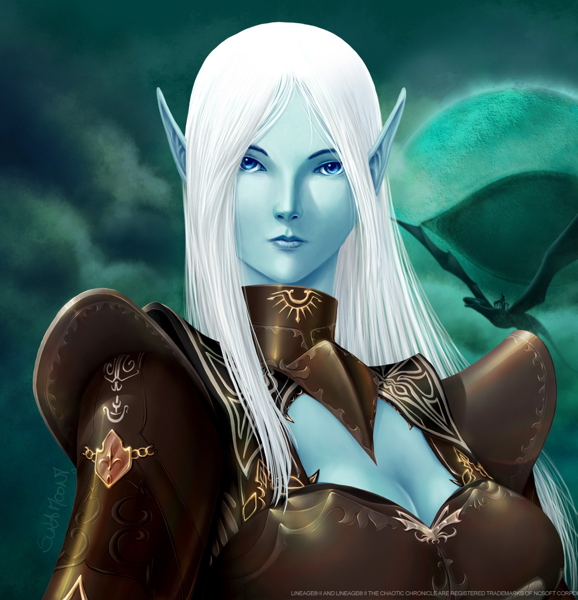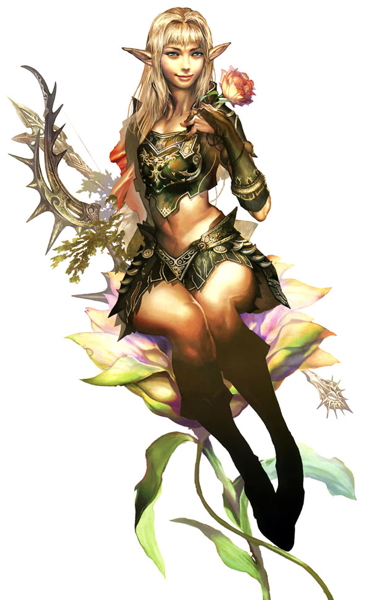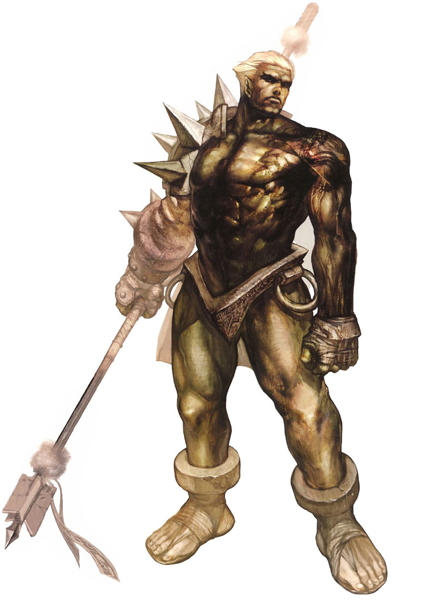Magic is a very subtle thing, rarely flashy and ostentatious. However, it can give one great power, and one with the knowledge and skill to work magic is well-respected indeed.
Magic Is In The Making
Magic is often found in the crafting and making of things. Most magicians are craftsmen, with the ability and skill to create wondrous items. For example, a baker may bake a bread so wholesome a single slice may feed a man for a day. A smith may forge a sword of unmatched sharpness and durability. A weaver may weave cloth so fine it can be used to create cloaks that easily shed water and can keep one warm in almost any weather. Other magic may be found in marvelous toys, powerful draughts and elixirs, or cunningly crafted musical instruments.
Thus, magicians are more like sages then spell-casting wizards, as the right knowledge can allow one access to great power. Those who create usually put something of themselves in their creations, even if it’s only the desire to make an attractive and useful object. At the same time, they often whisper spells over their creation, to ensure no mistakes are made or flaws allowed to creep into the construction process. The more complex an object, the more ritualized its creation can be, leading to the belief and perception that even the most mundane of goods is inherently magical due to the rites involved in its production.
Not all magic is creative, however. For some power is found simply in the knowing, and those who know the right things can predict the weather (and perhaps influence it), understand the language of birds and beasts, change their shape, brew potions from various herbs, or command the behavior of the elements.
Magic Among The Races
As inherently magical beings themselves, the elves and dwarves have great powers of creation and making. The elves are known for their skill with things of cloth, leather, and wood, while the dwarves work with gems, metal, and stone. However, there are metalworkers among the elves, just as there are carpenters among the dwarves. The crafts of the elves and dwarves are noted for their durability, beauty, and complexity of decoration (and in some cases, design). The elves are also renowned for their skill with herbs and berries, while the dwarves are noted brewers.
Humans can be makers as well, and are known for their bards, who create with song, and their scribes, who create with words and images. In addition, the natural curiosity of humans causes them to explore new ways of making and seek out answers to questions the elves and dwarves would never ask.
Halflings are, perhaps, the greatest of makers. They draw upon the inherent nature of both parents and are capable of feats of crafting unmatched by any other. For example, an elf-human halfling will have great skill with “elvish” things (wood, cloth, leather, animals, and the like), coupled with human inventiveness and ingenuity. Many of the wonders of the world have been crafted by halflings.
Goblins are makers as well, although their creations tend to be as twisted as they are. They prefer to make cunning traps and devices that allow them to strike foes from a distance. Some know dark secrets and use them to cast terrible spells, often dealing with the brewing of noisome draughts or the creation of poisons.
Magic In HERO System Terms
Magicians in the setting are usually known as “makers,” because, well, they make things. Magicians who aren’t makers are more akin to sages, and know things, often secret or hidden things. In order to be a proper maker, a character needs the Making Skill, which is a type of Power Skill. The die roll for Making is EGO/5 + 9. Since characters who are sages don’t normally cast spells per se, most of their magical powers are purchased as Talents, although a shape shifter might have the power of either Multiform or Shape Shift.
Any magical power derived from Making will have the Requires A Roll Limitation. Other Limitations vary depending on the Sphere of Making, but Incantations are common, as well as Concentration, Extra Time, Spell and so on.
Sample Spheres of Making
Alchemy, the Making of potions and elixirs through the mixing, cooking, and brewing of various herbs and other substances. Alchemy often creations potions of healing, strength, endurance, the removal of poisons, and so on.
Art, the Making of images, be it paintings, illuminations, engravings, and the like. Art is often used to enhance another’s Making. Examples include engravings in weapons and armor, or illuminations in a sage’s books.
Baking, the Making of breads, cakes, rolls, and the like. Properly Made breads can feed a man for a day from a single slice. Other Baked goods can help heal, usually by restoring lost strength and endurance.
Brewing, the Making of beers, ales, porters, stouts, and so on. Properly Made Brews can have restorative properties akin to Baking.
Carpentry, the Making of things with wood. Examples include boats that are nigh impossible to sink, musical instruments of unsurpassed quality and sound, shields that will not shatter (although this usually requires some skill in metal and leather as well), and similar items.
Cooking, the Making of fine foods. A properly Made meal or foodstuff can have properties akin to those of Baking and Brewing. Certain foods might allow for Alchemical powers as well.
Herbalism, the knowing of the properties of herbs and other plants. Herbalism isn’t a sphere of Making so much as it is a sage’s sphere of Knowing. However, and Maker of Alchemy, Baking, Brewing, and Cooking will have some herb lore. The power of plants is almost endless. They can be used to both harm and heal: many plant-based poisons have a plant-based antidote. In addition, anyone with extensive knowledge of plant lore will often be called up by other Makers to assist them. For example, a Carpenter might inquire as to the right kind of wood to be used for a specific project.
Poetry, the Making of poems, sonnets, satires, and the like. The spoken word can have great power, and a Maker of poetry can often influence a crowd (or an individual) on an emotional level.
Singing, the Making of songs and the singing of the same. Singing is similar to Poetry, and a Singing Maker can often “sing” spells into existence. As with Poetry, the effects are often emotional, and a true Maker of Songs can calm animals and even the elements with the right lyrics.
Smithing, the Making of things from metal. A Smith can create weapons and armor of power, such as swords that never dull and never break, or corselets that can’t be pierced. Other Smiths may craft more everyday objects, such unpickable locks, secure buckles, wind-up and clock work devices, and so on.
Weaving, the Making of cloth and the creation of things from cloth. A Weaver can create cloaks that allow one to become nearly invisible amid the rocks, trees, and weeds, coats that resist water—allowing one to remain dry in the worst of storms, and gloves that keep the fingers warm in any temperature. Another form of Weaver works with leather, and can create boots with similar properties. Another form of Weaver works with ropes, and can make lightweight, easy to coil lines that seem unbreakable, and have knots that never slip until you need to gather them up.
Some Sample Magical Items
ARROW-PROOF CORSELET
Effect: Resistant Protection (6 PD/6 ED) plus Resistant Protection (12 PD); Only Versus Arrows
Target: Self
Duration: Persistent
Range: Self
END Cost: 0
Description: This coat of close-linked mail is so well made it can resist even the most powerful of arrows.
Game Information: Resistant Protection (6 PD/6 ED) (18 Active Points); OIF (-½), Half Mass (-½) (total cost: 9 points) plus Resistant Protection (12 PD), Hardened (+¼) (22 Active Points); OIF (-½), Half Mass (-½), Only Works Against Arrows (-½) (total cost: 9 points). Total cost: 18 points.
FORESTER’S BOOTS
Effect: +4 with Stealth plus Environmental Movement: Icewalking
Target: Self
Duration: Constant/Persistent
Range: Self
END Cost: 0
Description: These boots are common among Elven rangers of the far north.
Game Information: +4 with Stealth (8 Active Points); OIF (-½) (total cost: 5 points) plus Environmental Movement: Icewalking (no penalties on slippery surfaces) (2 Active Points); OIF (-½) (total cost: 1 point). Total cost: 6 points.
HORN OF VALOR
Effect: Aid Presence 2d6 plus Drain Presence 2d6
Target: 100m Radius
Duration: Instant
Range: No Range
END Cost: 3
Description: One blast from this well-crafted horn will simultaneously hearten allies and dismay foes.
Game Information: Aid PRE 2d6, Reduced Endurance (½ END; +¼), Area Of Effect (100m Radius; +1 ½), Selective (+¼) (36 Active Points); Concentration (½ DCV; -¼) Extra Time (Full Phase, -½), OAF (-1), Incantations (throughout; must sound horn; -½), Only to Aid Others (-½) (total cost: 10 points) plus Drain PRE 2d6, Reduced Endurance (½ END; +¼), Area Of Effect (100m Radius; +1 ½), Selective (+¼) (60 Active Points); Concentration (½ DCV; -¼) Extra Time (Full Phase, -½), OAF (-1), Incantations (throughout; must sound horn; -½), Linked (Aid; -¼) (total cost: 15 points). Total cost: 25 points.
RANGER’S CLOAK
Effect: Life Support (Safe in Intense Cold) plus +4 with Concealment
Target: Self
Duration: Persistent/Constant
Range: Self
END Cost: 0
Description: Typically worn by Elves of the forests, these cloaks are also greatly prized by human hunters and scouts.
Game Information: Life Support (Safe in Intense Cold) (2 Active Points); OIF (-½) (total cost: 1 point) plus +4 with Concealment (8 Active Points); OIF (-½) (total cost: 5 points). Total cost: 6 points.
RING OF POWER
Effect: Invisibility to Sight Group, other powers
Target: Self
Duration: Persistent
Range: Self
END Cost: 0
Description: A fell item, this simple gold ring was forged by goblins as a tool for assassins and spies. When worn, the user becomes invisible to sight and can easily avoid most detection. However, the user’s vision becomes cloudy and mist-shrouded and even on bright days the world seems shadowy and dim. At the same time, the user’s hearing is sharpened considerably and even faint and far-away sounds can be easily detected. Finally, as proof of the ring's dark origins, the user will find he can easily see supernatural spirits, often in their true forms.
Game Information: Invisibility to Sight Group , No Fringe, Persistent (+¼), Reduced Endurance (0 END; +½) (52 Active Points); OIF (ring; -½) (total cost: 35 points) plus +3 PER with Hearing Group (6 Active Points); OIF (ring; -½), Side Effects (occurs automatically , Sight PER Rolls -3; -½) (total cost: 3 points) plus +4 versus Range Modifier for Hearing Group (6 Active Points); OIF (ring; -½) total cost: 4 points) plus Detect ghosts, spirits, wraiths, and the like 16- (Sight Group) (10 Active Points); OIF (ring; -½) (total cost: 7 points). Total cost: 49 points.
SINGING DOWN THE WEATHER
Effect: Change Environment (+/-5) Temperature Level Adjustment, Varying Combat Effects)
Target: 4km Radius
Duration: Constant
Range: No Range
END Cost: 6
Description: This song allows the character to reduce the effects of weather. With it, they can turn a thunderstorm into a gentle rain, a blizzard into a light snowfall, or a heatwave into comfortable warm weather. However, that’s all they can do. They can’t create weather from scratch (i.e. no summoning thunderstorms on a clear spring day) and they can’t make existing weather any worse.
Game Information: Change Environment (+/-5 Temperature Level Adjustment, Varying Combat Effects), Area Of Effect (4m Radius; +¼), MegaScale (1m = 1 km; +1) (56 Active Points); Extra Time (5 Minutes, time requires depends on the severity of the weather to be altered, but at minimum it takes 5 minutes; -2), Can Only To Calm And Reduce The Effects Of Weather, Cannot Create New Weather Effects (-1), Incantations (Requires Incantations throughout; -½), No Range (-½). Total cost: 11 points.
SONG OF PLENTY
Effect: Mind Control 12d6, Set Effect (please give me money/valuables)
Target: 18m Radius
Duration: Constant
Range: No Range
END Cost: 9
Description: Also known as Blaise’s Reel, this light-hearted ditty is as valuable as it is insidious. Those who hear it are compelled to give the musician some of their money—just a small amount, really—or any small items of value they may have. The Song will affect anyone in hearing range, which is roughly the listed Area Of Effect. Anyone near the fringe of the Area Of Effect, as well as anyone near another source of noise (such as a loud conversation, another musician, or herd of animals) will be affected by fewer dice of Mind Control (and might not be affected at all, if the competing noise is loud enough).
As a final note, the Song is such that people give willingly—they usually have no idea they were compelled by the musician to hand over anything. However, it’s said the reel can turn on the person performing it. A little can go a long way, and overuse of the Song of Plenty might result in the musician being mobbed by appreciative listeners.
Game Information: Mind Control 12d6 (Human class of minds), Telepathic (+¼), Personal Immunity (+¼), Reduced Endurance (½ END; +¼), Invisible Power Effects (effects of power are invisible to target; +½), Area Of Effect (18m Radius; +1) (195 Active Points); Gestures, Requires Gestures throughout (Requires both hands; must be able to play the instrument; -1), Extra Time (Full Phase, -½), OIF (musical instrument to play a tune on; -½), Set Effect (please give [me money/valuables]; -½), Stops Working If Mentalist Is Stunned (-½), No Range (-½). Total cost: 43 points.
SOOTHING SPRING WATER
Effect: Healing BODY 1d6 plus Healing END and STUN 2d6
Target: 3m Radius
Duration: Instant
Range: Touch
END Cost: 0
Description: This hidden pool can be found in the depths of an elf-tended forest. It has been carefully maintained and nurtured to be both aesthetically pleasing to the eye and a source of healing and refreshment to the body.
Game Information: Healing BODY 1 point, Area Of Effect (3m Radius; +¼), Reduced Endurance (0 END; +½), Constant (+½), Uncontrolled (+½) (8 Active Points); OAF Immobile (pool of spring-fed water; -2), One Use At A Time (-1) (total cost: 2 points) plus Healing END and STUN 2d6, Area Of Effect (3m Radius; +¼), Reduced Endurance (0 END; +½), Constant (+½), Uncontrolled (+½), Expanded Effect (x2 Characteristics simultaneously) (+½) (65 Active Points); OAF Immobile (pool of spring-fed water; -2), One Use At A Time (-1), Linked (Healing; -¼) (total cost: 15 points). Total cost: 17 points.
STONE SETTING
Effect: Healing BODY 4d6, Only To Repair Stonework
Target: 2m Radius
Duration: Instant
Range: Touch
END Cost: 5
Description: A Dwarven technique, the Stone Setting ritual allows the Dwarf to repair damage done to stonework, be it cracks and chips from a hammer, the shifting of stones due to the age of the construction, or the after effects of an earthquake. The Dwarf moves his hands over the damaged stones and “sings” them back into place, calming their spirits and making things as good as new.
Game Information: Healing BODY 4d6, Area Of Effect (2m Radius; +¼) (50 Active Points); Extra Time (1 Turn (Post-Segment 12), Character May Take No Other Actions, -1 ½), One Use At A Time (-1), Only To Repair Stonework (walls, wells, arches, and so on; -1), Concentration, Must Concentrate throughout use of Constant Power (½ DCV; -½), Incantations (Requires Incantations throughout; -½). Total cost: 9 points.
SWEET BEER
Effect: Healing END 4d6
Target: One character
Duration: Instant
Range: No Range
END Cost: 0
Description: Carefully brewed and bottled, Sweet Beer is well known for its restorative powers. Just a single bottle is enough to reinvigorate an exhausted individual and enable them to act as if they’d just gotten a full night’s rest.
Game Information: Healing END 4d6 (40 Active Points); 1 Charge (per bottle; -2), One Use At A Time (-1), Extra Time (Full Phase, to consume the bottle; -½). Total cost: 9 points.
WAYBREAD
Effect: Life Support (Character does not eat)
Target: One character
Duration: One Charge Lasting One Day
Range: Self
END Cost: 0
Description: Made for those about embark on long journeys, a single piece of Waybread is sufficient to sustain a man for an entire day. It’s usually packed in week allotments, the 16 Charges listed before should be considered a two-weeks supply.
Game Information: LS (Eating: Character does not eat) (3 Active Points); OAF Fragile (-1 ¼), 16 Continuing Charges lasting 1 Day each which Never Recover (-0), Requires Full Phase To Eat Waybread (-0). Total cost: 1 point.
WAYFARER’S STAFF
Effect: +46d Hand-to-Hand Attack plus Bump of Direction plus +2 with Navigation)
Target: One character/Self/Self
Duration: Instant/Constant/Constant
Range: Touch/Self/Self
END Cost: 0
Description: Made of well-seasoned and study wood, and capped with metal, these staves are set with lays of finding and returning.
Game Information: HA +4d6, Reduced Endurance (0 END; +½) (30 Active Points); OAF (-1), Required Hands Two-Handed (-½), STR Minimum 10 (-½), Hand-To-Hand Attack (-¼) (total cost: 9 points) plus Reach +1m (1 Active Points) (total cost: 1 point) plus Bump Of Direction (3 Active Points); OAF (-1) (total cost: 1 point) plus +2 with Navigation (Land) (6 Active Points); OAF (-1) (total cost: 3 points). Total cost: 14 points.
Magic Items Hero Designer File



